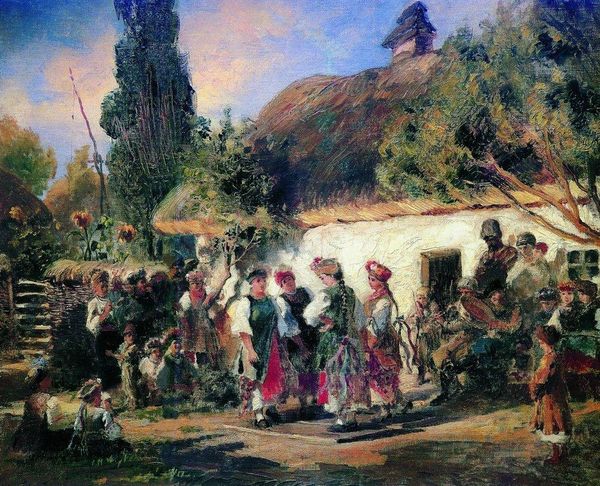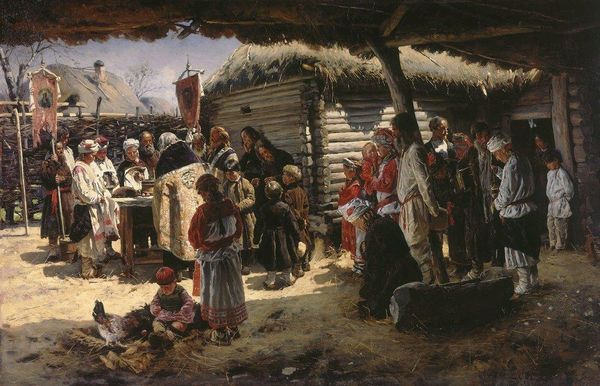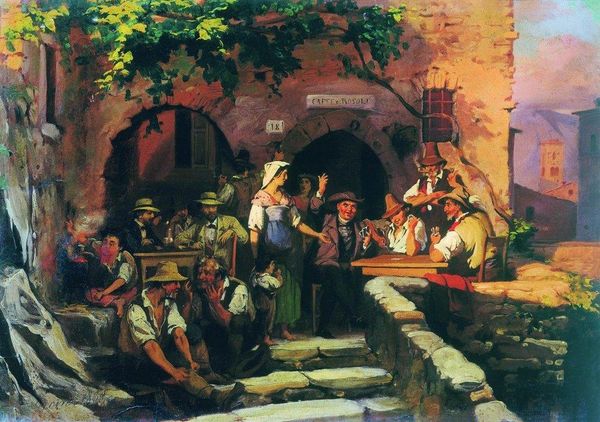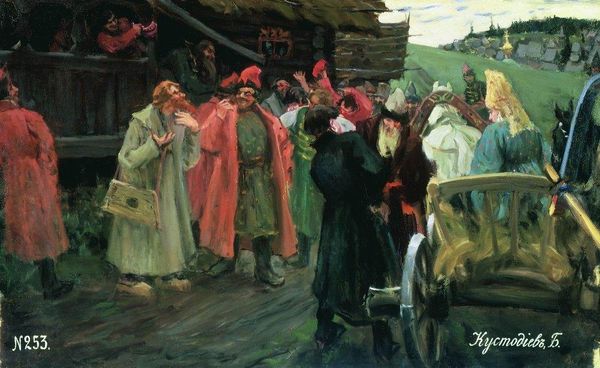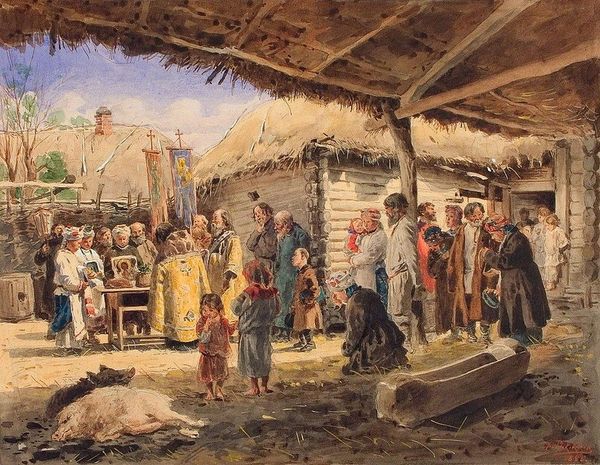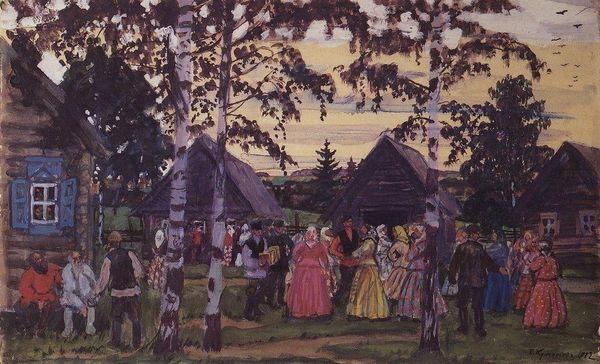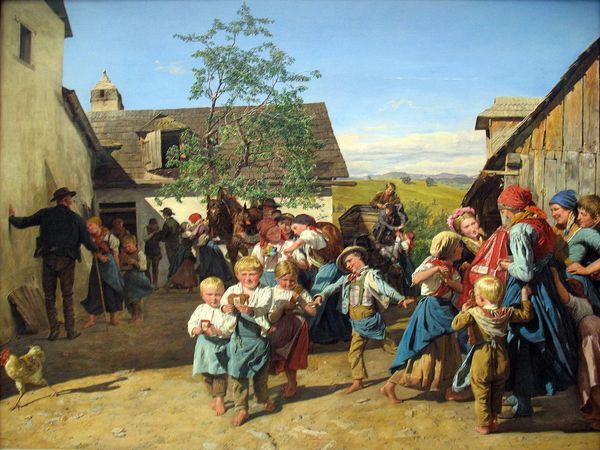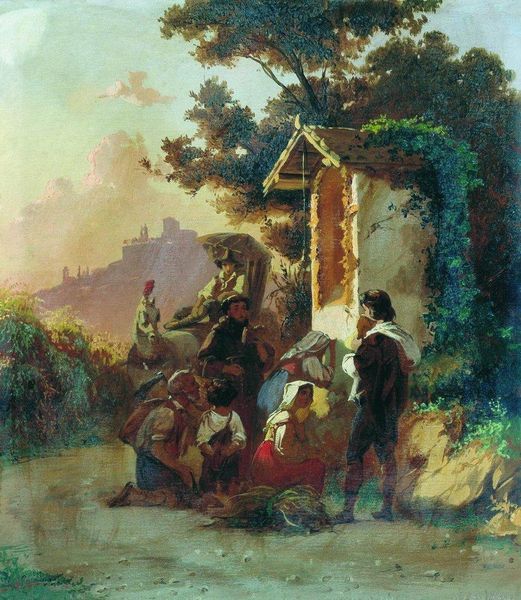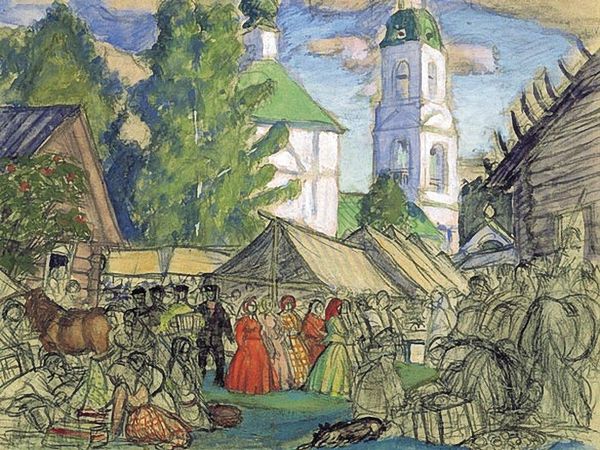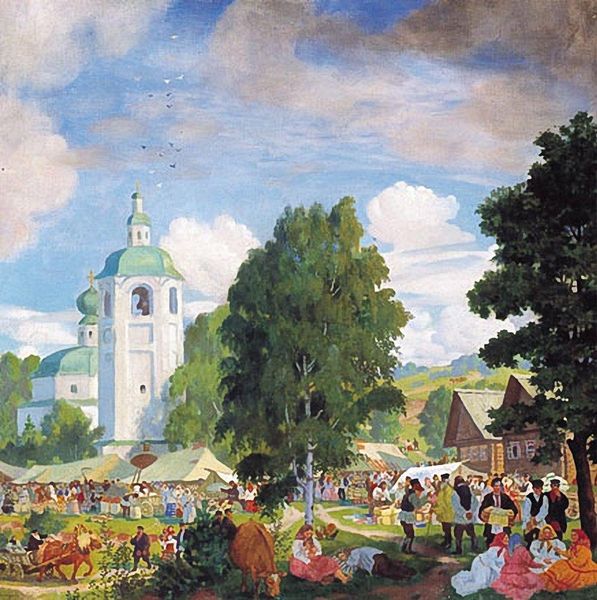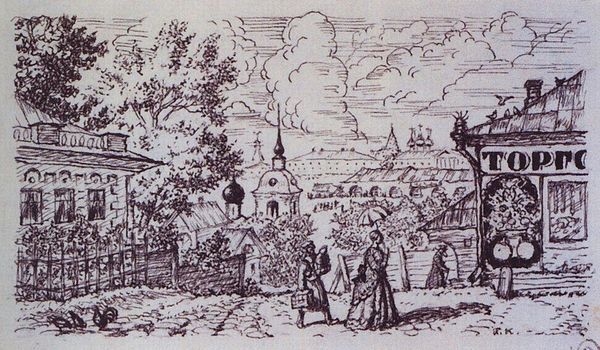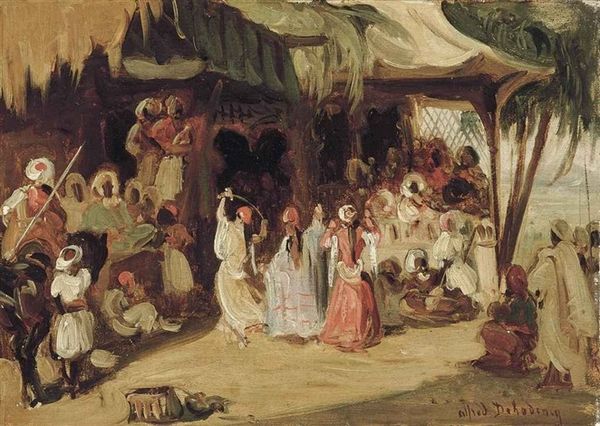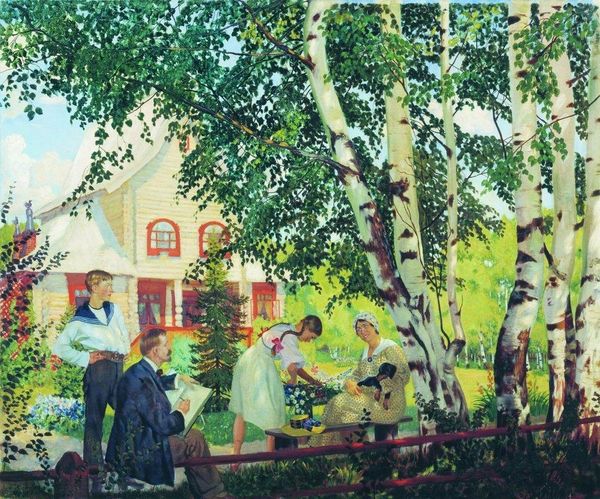
Copyright: Public domain
Konstantin Makovsky painted this scene, capturing a Sunday evening in a Russian village with oil. Notice the headdresses, or wreaths, adorned with ribbons and flowers, symbols deeply rooted in Slavic traditions. These headdresses are not mere decorations but potent emblems of youth, purity, and the life force of nature. We can see echoes of similar floral wreaths in ancient Greek and Roman festivals, where they symbolized celebration and divine favor. The image of Flora, the Roman goddess of flowers and spring, often comes to mind. Interestingly, the wreath also appears in different guises across cultures. Think of the halo in Christian iconography, which shares a symbolic ancestor in the pagan sun-wreath representing divinity. It seems that the human desire to connect with nature and the divine is a powerful, recurring motif. Consider how this headdress, in its many forms, taps into our collective memory, evoking feelings of joy, reverence, and a primal connection to the natural world. It is this connection that gives the wreath its enduring emotional power, speaking to us across centuries and cultures.
Comments
No comments
Be the first to comment and join the conversation on the ultimate creative platform.
